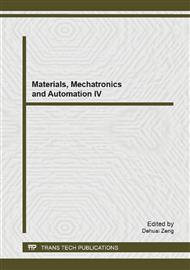p.321
p.327
p.333
p.339
p.345
p.353
p.356
p.361
p.365
The Brainwave Concentration Analysis of Direction Recognition
Abstract:
This research proposed a formula for calculating the concentration based on the view of cognitive neuroscience and a design of Brain Computer Interface (BCI) to show the strength of concentration when performing the direction recognition. The experiences proceeded by catching brainwave signals of human vision while sensing the test interfaces of graphics representing direction by brain-wave sensor and analyzed the characteristic frequency band of the brainwave related to direction recognition, then formulate the attention index of direction recognition based on the cognitive neuroscience. This research is to analyze and discuss every kind of brainwave frequency band characteristics while subjects recognize the directions; moreover, the proposed brain computer interface not only could demonstrate the strength of the subject's attention, but also could provide subject to play the contest of brainwave game with virtual computer player, providing the feasibility of future brainwave application development
Info:
Periodical:
Pages:
345-349
Citation:
Online since:
June 2014
Authors:
Price:
Сopyright:
© 2014 Trans Tech Publications Ltd. All Rights Reserved
Share:
Citation:


